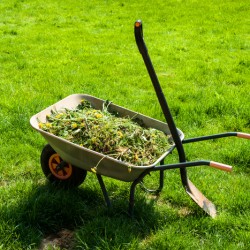
The grass on your lawn also requires a little assistance to ensure that they grow optimally, allowing you to reap the many benefits of having a well-manicured lawn. These practices that will help your grass grow and stay healthy include proper watering, mowing and fertilizing.
All these practices contribute greatly to the health of the grass on your lawn. However, over time, these may not be adequate. The soil on lawns can get compacted due to heavy traffic both from the residents of a household and from the vehicles they own. When this happens, the water and the nutrients from the fertilizers applied to the soil have a harder time reaching the roots of the grasses.
To remedy this, aeration is recommended. Aeration is the practice of punching holes into the soil with the use of an aerator. There are two types of aerators that are commonly used: a plug aerator and a spike aerator. Plug aerators remove finger-sized plugs of soil while spike aerators simply bore holes onto the ground.
The benefits of aeration include better absorption of water, fertilizers and oxygen and the prevention of rainwater runoff. Helpful organisms like earthworms can also thrive better in lawns that are aerated regularly. In short, aeration allows the grass in your lawn to grow optimally and become more resilient against diseases and pesky weeds.
While soil aeration is a straightforward activity, it does require some physical exertion and is best left to experts in lawn care. Property owners bent on performing this task on their own will find greater success if they enlist the aid of another person in performing the job. It will also help to use a full-size truck with a large bed in transporting the aerator. Do note that aerator hire has its peak and off seasons, usually during the weekends of spring and fall. As such, make reservations early on. You can even save up on costs by partnering with a neighbor or friend.
Before you start aerating the soil in your lawn, carefully survey your lawn for areas to avoid, like spots with sprinklers. It is highly advisable to mark these before starting. For parts of the lawn which have recently been aerated or have loose, sandy soil, one pass of an aerator is sufficient. Otherwise, make two passes.
The plugs left by a plug aerator are best left on the lawn as they contain nutrients which can be used by the grass. Do keep in mind, however, that aeration can bring the seeds of weeds up to the top soil. Take this as an opportunity to fertilize the soil and apply herbicides.
Article Source: http://EzineArticles.com/8675363
